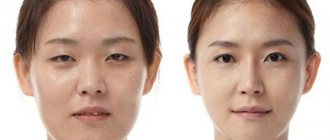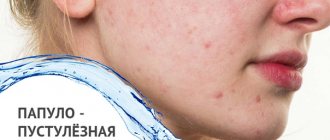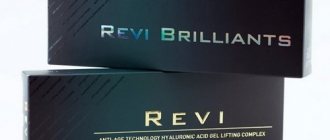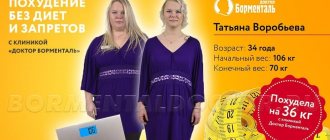Mesotherapy has successfully helped the third generation of women to delay the withering of the face and body by 10-15 years.
Men, thanks to these techniques, can fight to preserve their hair. Mesotherapy is a complex of subcutaneous injections with a cosmetic, aesthetic, therapeutic or corrective effect. The method of administration of the medicinal cocktail and its composition depend on the purpose of the procedure.
What is mesotherapy
The procedure consists of intradermal administration of medicinal and vitamin preparations in low doses. This is a minimally invasive injection technique that allows you to eliminate many aesthetic problems of the face, body, and hair. After it, the skin is transformed, the skin becomes tightened and elastic.
Mesotherapy is carried out as a separate manipulation or part of cosmetic procedures. The drugs are administered with the thinnest needles to a depth of 1.5-13 mm, this depends on the area of work. At the age of 18 to 25 years, facial mesotherapy is more often performed to get rid of oily skin, acne and its consequences. After 25, it acts as a prevention of aging.
An improvement in skin condition is noted after the first session, but a course of treatment is required to solve aesthetic problems. The number of visits is selected individually. From 4 to 15 procedures may be required at intervals of 6-10 days. To get rid of cellulite, up to 15 sessions are required, to restore the oval of the face - up to 8, to eliminate bags under the eyes - up to 4.
What is the difference between mesotherapy and biorevitalization
The methods are very similar, but differ in the composition of the agents and the method of administration. For biorevitalization, gel-like preparations based on hyaluronic acid are used. Due to their dense consistency, they fill obvious wrinkles well, so the procedure is recommended for people over 30 years old.
During mesotherapy, liquid cocktails that contain various substances are administered. The cosmetologist selects the composition taking into account skin problems, age, and wishes of the client. They may also contain hyaluronic acid , but its amount will be significantly less than for biorevitalization. Due to the liquid form of the drugs, it will not be possible to fill deep wrinkles and folds. Due to the multicomponent composition, the range of indications for mesotherapy is wider.
Mesotherapy and biorevitalization can be used as two complementary procedures. They help improve skin condition, but have a different spectrum of action.
Is it possible to perform mesotherapy for people without education?
Since the procedure requires sterility, knowledge of the anatomy of the human face and body, the ability to understand drugs and mix them correctly, taking into account chemical reactions, mesotherapy at home is only possible with the use of a mesoscooter. It should be noted that mesoscooters are:
- household - with needles up to 0.5 mm long;
- professional - needles from 0.5 mm.
You can only use household appliances on your own that are designed to penetrate your usual skin care cosmetics deeper into the skin. The use of professional devices should be entrusted to experienced cosmetologists, since such a mesoscooter makes deep punctures and destroys the skin barrier, which means there is a risk of infection if sanitary conditions are not observed.
As for whether there is a best mesotherapy technique, each technique has its own advantages and disadvantages. And when choosing one method or another, cosmetologists take into account the global nature of the problem, localization, structural features of the patient’s skin, as well as the drug that will be used in the work. Therefore, in the modern beauty industry it is difficult to identify a universal technique, because sometimes several techniques are used when introducing meso-cocktails, or even new, improved techniques appear.
Pros and cons of mesotherapy
The main advantage is the safety and non-toxicity of the drugs used, which extremely rarely cause side effects. Other advantages:
- wide age range;
- combined with other cosmetic procedures;
- minimal list of contraindications;
- persistent, long-lasting effect;
- suitable not only for women, but also for men;
- performed on an outpatient basis.
One of the disadvantages is the need for several sessions - from 4 or more, which depends on the problem being solved. After injections, slight swelling and discomfort at the injection site are possible, but this should not be a cause for concern.
Is it possible to inject the drug?
Most cosmetologists do not inject fillers into an area that has already been filled . This does not increase the lifespan of the substance and can lead to negative consequences (you can find out about the consequences of using fillers and the features of rehabilitation here). Additional injections are possible only in rare cases of spot correction, which is prescribed by the treating dermatologist. In the normal course of action of the filler, before re-introducing it is necessary to wait until the drug is absorbed.
The reader will also be interested in reading about the comparison of fillers with other procedures:
- Comparison of fillers with mesothreads and other popular anti-aging techniques.
- Popular anti-aging procedures: biorevitalization and fillers - which is better?
What therapeutic effect does mesotherapy have?
The result is noted due to 2 factors: delivery of active components to the skin and the mechanical effect of the needle. At the injection site, many microtraumas appear, which trigger the production of their own elastin and collagen, as a result of which microcirculation and metabolic processes improve. Depending on the task and the composition of the cocktails, the following effects are noted:
- the elasticity and firmness of the skin increases;
- hair growth increases;
- the functioning of the sebaceous glands is normalized;
- Spider veins are eliminated and blood vessels are strengthened;
- dark circles and bags under the eyes disappear;
- The oval of the face is tightened, fine wrinkles and sagging skin are eliminated;
- pigment spots are eliminated;
- enlarged pores are narrowed, acne and its consequences are eliminated.
The cosmetic procedure smoothes out the “orange peel” and evens out the skin. It is effective in the presence of stretch marks, scars, scars due to stimulation of tissue regeneration.
How and with what to remove it?
If infections develop, facial symmetry is disturbed, filler oversaturation occurs, the Tyndall effect occurs, tissue slipping and deformation is necessary to get rid of the filler. For this, there are injection and physiotherapeutic methods:
Longidaza for resorption
Under the action of the enzyme hyaluronidase, biodegradation of hyaluronic acid occurs.
How should Longidase be diluted to remove the drug? The powder is diluted right before use . 1 or 2 ml is slowly added to the bottle. 0.25-0.5% Procaine solution or saline solution (0.9% Sodium chloride).
To prevent the drug from foaming, mix it without shaking after a few minutes. Longizada is injected slowly and as close to the filler as possible.
IMPORTANT! Before use, you need to do an allergy test. The dosage and procedure are prescribed and performed only by a doctor. Independent actions can worsen the consequences.
Physiotherapy course
Darsonvalization - improves lymph and blood flow and increases the permeability of cell membranes. Microcurrent therapy – improves blood circulation at the site.
Areas of application of mesotherapy
The procedure can be used to eliminate aesthetic problems on any part of the body. Mesotherapy application areas:
- Body.
- Face.
- Hair and scalp.
- Eyes (eyelids, area around the eyes, bags and dark circles under the eyes).
- Stomach.
- Neck.
- Chin.
- Hips, buttocks.
- Chest (neckline area).
- Hands.
- Legs.
- Back.
- Nose and nasolabial folds.
- Lips.
- Vessels.
The low invasiveness of the procedure allows it to be used even on areas with thin and sensitive skin. It can be combined with other therapeutic and surgical techniques within the framework of aesthetic medicine.
Mesotherapy shows high effectiveness for baldness. According to reviews of people who have undergone the procedure, after 10-13 sessions, activation of the hair follicles is noted.
Indications and contraindications for mesotherapy
Mesotherapy is performed as a therapeutic and preventive procedure from the age of 18. This is a universal and effective manipulation that has a wide range of indications:
- rosacea;
- acne (acne vulgaris, rosacea);
- stretch marks;
- scars;
- bags, circles under the eyes;
- sagging, decreased skin tone;
- dark spots;
- wrinkles;
- swelling;
- oily, porous skin;
- cellulite;
- alopecia (hair loss).
Injections can serve as a preparatory step before other cosmetic procedures or during the recovery period after them. The procedure has a number of limitations:
- pathology of the coagulation system;
- intolerance to substances contained in the drug;
- pregnancy;
- tendency to form keloid scars;
- breast-feeding;
- period of exacerbation of chronic diseases;
- severe inflammatory process, fungal infection, open wounds in the work area.
Injection mesotherapy is not recommended when taking antiplatelet agents or anticoagulants due to their effect on the blood coagulation system. Time restrictions: menstruation, recent deep peeling, respiratory diseases.
What techniques are best to use?
From the point of view of practicing cosmetologists, the most effective and easy-to-perform mesotherapy techniques include:
- superficial nappage;
- classical technique;
- papules;
- using a mesoscooter.
When choosing a technique, it is important to start not only from the simplicity of the method, but also from its purpose:
- for the treatment of dry or excessively oily skin, prone to rashes, acne, as well as in the presence of vascular problems, scars, it is better to choose between the nappage and papular method;
- Rosacea is treated with medium nappage;
- for hyperpigmentation on the face and body, they resort to the medium nappage technique;
- if pigmentation occurs due to prolonged exposure to sunlight, then you can try superficial nappage without treating the skin with any preparations (as an exception, applying an anti-pigment meso-cocktail is allowed)
- if there is swelling around the eyes, the appearance of fine wrinkles and other symptoms of skin aging in this area, it is better to stick to the classic technique;
- for alopecia or seborrhea, classic injections and superficial nappage will produce the greatest effect; You can find out about microcurrents for rosacea here.
- To restore damaged hair, the superficial papules technique is used;
- to lose weight and eliminate cellulite, it is necessary to administer lipolytic medications, which is most conveniently accomplished by the method of medium papules and infiltration;
- For stretch marks or severe ptosis, the linear-retrograde technique is used.
Positive results can only be achieved with the combination of the correct selection of anti-aging agents and mesotherapy techniques.
Mesotherapy techniques and methods
Methods differ in the method of administering drugs to the treated area:
- Pinpoint (“prick by prick”) is a classic, easy-to-perform technique. The drug is administered with a needle at a right angle to a depth of 4 mm at a distance of 1.5-2 cm.
- Nappage (“coating”) – quick injections at an angle to the surface of the skin. The needle is inserted to a depth of 1 to 4 mm, which depends on the type of nappage: superficial, middle or deep. The distance between injections is 3 mm.
- Papular. The needle is inserted at an angle to a depth of 1-2 mm to form small papules (tubercles).
- Linear. More often practiced for the treatment of scars and stretch marks. The needle is directed tangentially, the drug is injected retrogradely to fill the dermis under the wrinkle, fold of skin.
- Infiltration. It is used primarily to get rid of excess fat deposits (orange peel treatment). The needle is inserted to a depth of up to 13 mm every 2-2.5 cm.
In therapeutic mesotherapy, the continuous infusion technique is used to relieve pain in arthritis and arthrosis.
Features of injection mesotherapy of the face
The injection technique of mesotherapy remains one of the most popular in modern cosmetology. Although it involves the use of the thinnest needles, the diameter of which is tenths of a millimeter, in most cases the skin is pre-treated not only with an antiseptic, but also with an anesthetic. The first allows you to disinfect the skin and reduce the risk of developing infectious complications, while the second blocks the transmission of pain impulses, which makes the procedure absolutely painless. Special creams or gels based on lidocaine are often used as an anesthetic.
Today there are 4 main injection techniques, which are no different from those typical for biorevitalization. This:
- nappage;
- papules;
- tubercles;
- linear-retrograde.
To increase the effectiveness of the procedure, especially with fine-wrinkled and deformation types of aging, it is recommended to perform lymphatic drainage vascular injection or capillary mesotherapy before it. This technique consists of making injections into specific areas of the face and neck, in particular in the projection of all groups of lymph nodes present on the face and neck. Sometimes the lower or middle third of the face along the massage lines and the double chin, if present, are also chipped. This allows:
- activate the outflow of lymph and reduce swelling by activating the activity of the regional lymph nodes of the face;
- activate blood circulation in the skin;
- strengthen the walls of blood vessels;
- reduce the size of fat bags on the face.
With the deformation type of aging, capillary mesotherapy is indicated before each procedure, while with the fine-wrinkle type it is traditionally performed only before the 1st, 3rd and 5th session. For lymphatic drainage vascular injection, the following drugs are chosen:
- GAG Complex DVL Capyl formula;
- Gingko Biloba;
- Artichoke;
- Rutin + melito extract and similar.
Nappage
This technique involves injecting the drug into different layers of the skin. As a result, they distinguish:
- superficial nappage, when the tip of the needle is inserted only into the very top layer of the skin (epidermis), which ensures the absence of blood, but also gives the least effect;
- median nappage, which involves the introduction of low doses of meso-cocktails to a depth of 1-1.5 mm, which almost always ensures the absence of papules, but is accompanied by blood dew;
- deep nappage, which consists of injecting the drug by 2-3 mm, which is indicated for patients with large skin thickness.
Papules
The essence of this technique is to introduce meso-cocktails into the upper and middle layers of the skin located at an angle of 15° to the skin in such an amount that it leads to the formation of small tubercles at the site of needle insertion. Their size directly depends on the amount of the drug administered. Small papules 1-2 mm in size are made in the area around the eyes, and injections are performed at a distance of 0.3-0.5 mm from each other. In areas where the skin is denser, larger papules up to 3-4 mm in size are made, but they are placed at a distance of 1-1.5 cm from each other. But the size of the papules directly affects the period of their resorption: the greater the amount of the drug administered, the longer they will dissolve.
As a rule, papules completely resolve in 2-7 days.
tubercles
The essence of the technique is similar to the previous one, but the needle is inserted at an angle of 45° and along its entire length. This ensures deeper penetration of the mesococktail into the layers of the skin and the creation of a kind of drug depot in it. As a result, there are no bulges on the surface of the skin, although at first after the injections there is some swelling at the sites where the needle was inserted.
The disadvantage of the tubercular technique is the high risk of small bruises.
Linear-retrograde technique
This technique of facial injection mesotherapy is considered the most effective, but also the most difficult, since it has much in common with facial reinforcement. To use it, needles 12-13 mm long are used, while other techniques involve the use of needles 4 mm long. When choosing a linear-retrograde technique, the needle is inserted into the skin parallel to its surface along its entire length, but the drug is injected only during the reverse stroke of the needle. Therefore, fewer injections are required, but the procedure is more traumatic, although it has an additional rejuvenating effect by activating the synthesis of collagen and elastin.
Types of mesotherapy
There are two types of procedure: injection and non-injection. In the first case, active substances are delivered to the skin using ultra-thin needles manually or using hardware. “Manual” mesotherapy allows you to work in the most delicate areas with thin skin, the drug is used sparingly.
Automatic injectors (guns) are suitable for working on a large area of skin (buttocks, thighs, abdomen, etc.). They facilitate and speed up manipulation, helping to quickly work on a large area in a short period of time. The device provides the exact depth of needle insertion and volume of the drug.
The second type of mesotherapy is the introduction of meso-cocktails without the use of needles. The active ingredients penetrate the skin through laser irradiation, magnetic and electric waves, and oxygen treatment. The method is ideal for people who want to undergo a rejuvenating procedure, but are afraid of injections.
Hardware therapy
To manually nourish the surface of the face and body with meso-cocktail, a cosmetologist will need a lot of effort and time. It is more convenient to carry out this procedure with an injector pistol.
The settings allow you to adjust the depth of the punctures and the volume of the injected drug, so any type of mesotherapy can be performed using the injector. The gun evenly and quickly processes large areas of the body at a given level.
In addition, there are non-injection hardware methods. They are based on the fact that a nutritional mixture applied to the skin penetrates deeply under the influence of various factors:
- high frequency currents;
- ultrasound;
- magnetic waves;
- tight air jets;
- laser
These procedures are painless, non-traumatic, and provide a long-lasting rejuvenating effect.
Complications, side effects and consequences of mesotherapy
An allergic reaction to the administered substances is possible, which can manifest itself as severe swelling of the skin, itching, and hives. Other negative effects:
- Pain. When the drugs are administered, there is pain and sometimes a burning sensation, which is associated with irritation of skin receptors. If necessary, the cosmetologist administers local anesthesia using gels.
- Redness. Normal reaction to injection. The redness disappears within half an hour, maximum after 2-3 hours.
- Bruises. They occur due to damage to blood vessels during the injection. They dissolve from 2 days to 2 weeks depending on the area of the skin , the condition of the vascular wall, and the degree of fragility of the blood vessels.
Minor swelling is possible - the body’s natural response to skin injury; it goes away on its own within 1-2 days.
Retrograde-linear method
This technique is more traumatic for subcutaneous tissues. The cosmetologist inserts a 12 mm needle into the middle layer of the skin parallel to its surface to a depth of 2-3 mm. Injects mesococktail evenly into the resulting channel with the reverse movement of the needle.
For the linear method, only the gel consistency of the active substances is used. The method is suitable for solving aesthetic problems: filling wrinkles, volume correction, smoothing out scars.
The retrograde technique comes in different types depending on the defect that needs to be corrected:
- tunnel, when the end of one channel coincides with the beginning of another (the needle moves along the fold of skin, filling it with filler);
- with the tracing method, the channels are pierced one after another with a short interval (suitable for smoothing out nasolabial wrinkles);
- the fan method is used to raise the line of the cheekbones or smooth out small creases in the corners of the mouth (from one puncture point, the channels are placed in different directions);
- The reinforcement straightens the networks of wrinkles around the eyes and fills the missing volume (for this, the channels are formed crosswise in relation to each other).
Preparations, remedies and medicines for mesotherapy
Taking into account the principle of action, mesotherapy drugs are divided into several groups: vitamin, vascular, lifting, anti-inflammatory, lipolytic. The composition may include:
- dimethylaminoethanol;
- lipolytics – liporcil, silicine, lopocat, phosphodithylcholine;
- vitamins – A, C, E, B;
- acids – glycolic, pyruvic, hyaluronic;
- plant extracts – aloe vera, green tea, guarana, artichoke;
- minerals – silicon, magnesium salts, zinc, selenium;
- antibiotics, anti-inflammatory drugs;
- extracts of animal origin - elastin, peptides, collagen, etc.
The specialist selects the composition of the cocktail individually, taking into account skin type, main problems, age and other factors.
Recommendations for patients
After the injections, the cosmetologist gives recommendations for the recovery period, which takes an average of 3-5 days:
- do not visit the sauna, bathhouse, solarium;
- do not sunbathe in the sun;
- do not perform peelings, massages and other procedures that involve mechanical impact on the skin;
- limit physical activity.
After the procedure, you should stop drinking alcoholic beverages, as they promote vasodilation. It is recommended to use sunscreen before going outside. In the first days, treat the skin with chlorhexidine and healing gels. Decorative cosmetics, especially foundation, should be discarded in the first 2 days so as not to irritate the skin and provoke inflammation.
It is not recommended to take blood thinning medications (aspirin, etc.) for 2 days after injections.
Why is there no effect after contouring?
A positive result may be absent or insignificant if:
- incorrectly selected filler (of the required molecularity and density);
- incorrectly calculated consistency;
- the cosmetologist’s recommendations are not followed (self-massages, alcohol consumption, exposure of the area to thermal overheating: solarium, sauna, bathhouse, etc.).
More details about what can and cannot be done after fillers and in what cases they should not be injected can be found in this material, as well as more information about whether it is allowed to drink alcohol on the day of filler injection and after the procedure can be found here.
Where can you get mesotherapy in the Russian Federation?
Mesotherapy is one of the most popular procedures performed by cosmetologists in medical or cosmetology centers. When choosing a clinic, you need to pay attention to the availability of the necessary licenses to carry out this activity, as well as a diploma from a specialist.
Before mesotherapy, it is recommended to clarify which drug manufacturers the institution works with, view photos of the work, and a description of the procedure. The price of clinic services depends on the drugs used, the number of injections and the area of influence.
Mesotherapy is an effective cosmetic procedure. It solves a number of problems with skin and hair, while avoiding surgical intervention . The result can last up to 1.5 years; it is recommended to repeat the course once a year.
Where is the drug injected and how long does the effect last?
Face (all zones).- Neck and décolleté.
- Hands.
- Breast.
- Earlobes.
The duration of action of the filler depends on the type of base, manufacturer, quality of work of the dermatologist and the individual characteristics of the patient’s skin. On average, the result lasts from 6 months to 1 year. Denser types of fillers can maintain the effect for up to 2 years.









